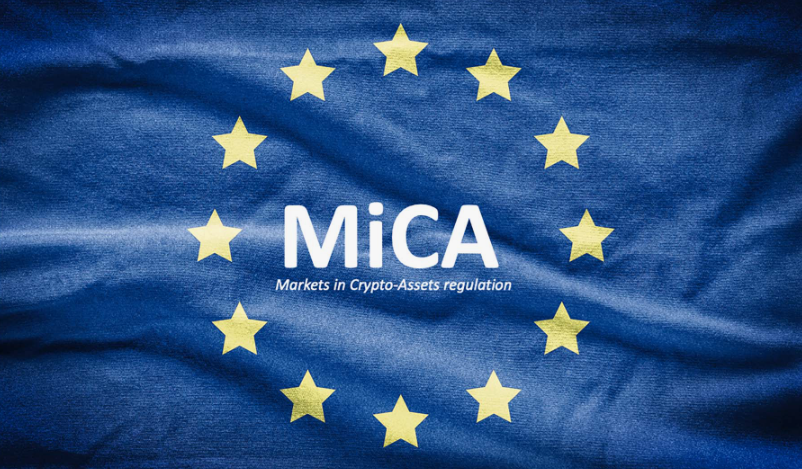Altcoin Regulatory Compliance News Latest Updates on MiCA, SEC, Global Crypto Laws 2025

The cryptocurrency landscape continues evolving rapidly, with altcoin regulatory compliance news dominating headlines as governments worldwide implement comprehensive frameworks for digital asset oversight. August 2025 marks a pivotal moment in cryptocurrency regulation, with the European Union’s MiCA regulation now fully implemented and the United States establishing new task forces to address altcoin compliance requirements.
Recent developments signal a fundamental shift toward structured regulatory environments that provide clarity while maintaining innovation opportunities. President Trump issued an executive order concerning crypto on January 23, 2025, establishing an inter-agency task force referred to as the President’s Working Group on Digital Asset Markets, demonstrating the administration’s commitment to comprehensive cryptocurrency oversight. These regulatory changes directly impact altcoin projects, exchanges, and investors seeking compliant operations in major jurisdictions.
Latest Altcoin Regulatory Compliance News
SEC Crypto Task Force Establishes New Oversight Framework
The Securities and Exchange Commission has intensified its focus on altcoin compliance through the establishment of a dedicated Crypto Task Force. Commissioner Hester M. Peirce has been designated to lead the Crypto Task Force, which coordinates with relevant regulators across the government and actively engages with industry and subject matter experts. This development represents a significant shift toward collaborative regulation rather than enforcement-first approaches.
The task force’s mandate includes evaluating how various altcoins fit within existing securities frameworks while developing new guidelines specific to digital asset characteristics. This comprehensive approach addresses long-standing uncertainty around altcoin classification, providing clearer pathways for compliance across different token types and use cases.
Industry stakeholders have responded positively to the collaborative approach, with many altcoin projects initiating proactive compliance programs ahead of formal guidance. This preemptive compliance trend reflects growing recognition that regulatory clarity benefits both projects and investors through reduced uncertainty and improved market access.
Department of Labor Relaxes Cryptocurrency Investment Guidelines
In a significant policy shift, the DOL issued Compliance Assistance Release 2025-01 on May 28, 2025, which rescinds its 2022 guidance that cautioned plan fiduciaries to exercise “extreme care before they consider adding a cryptocurrency option to a 401(k) plan’s investment menu”. This change opens substantial institutional investment opportunities for compliant altcoin projects.
The relaxed guidelines reflect growing recognition of cryptocurrency as a legitimate asset class worthy of retirement plan inclusion. This development particularly benefits established altcoins with strong compliance records and institutional-grade custody solutions. Projects demonstrating robust regulatory compliance are positioning themselves to capture this emerging institutional demand.
Retirement plan providers are now developing comprehensive due diligence frameworks for altcoin evaluation, emphasizing compliance history, regulatory status, and operational transparency. These institutional requirements are driving higher compliance standards across the altcoin ecosystem while creating competitive advantages for compliant projects.
European MiCA Regulation Implementation Impact
Comprehensive Altcoin Classification Framework
The Markets in Crypto-Assets (MiCA) regulation has fundamentally transformed altcoin compliance requirements across the European Union. The full implementation of MiCA heralds a new era of harmonised supervision for crypto-assets across the EU to provide legal certainty through a flexible legal framework for CASPs and protection for holders of crypto-assets. This comprehensive framework addresses previously unregulated aspects of altcoin operations.
With its primary provisions in effect as of December 2024, the MiCA regulation establishes clear rules for crypto-asset issuers, service providers, and investors across the European Economic Area (EEA), aiming to address risks such as financial instability, fraud, and market abuse while fostering innovation. The regulation’s balanced approach provides certainty while maintaining space for innovation.

Altcoin projects operating in European markets must now comply with stringent disclosure requirements, reserve maintenance obligations, and operational standards. These requirements have created compliance costs but also enhanced investor confidence through improved transparency and consumer protection measures.
CASP Licensing Requirements Transform Market Access
Starting January 2025, Crypto Asset Service Providers (CASPs) must begin applying for licenses to operate within the EU, fundamentally changing how altcoin exchanges and service providers operate in European markets. The licensing regime establishes comprehensive operational standards while providing regulatory clarity for compliant operators.
The CASP framework covers various altcoin-related services including trading, custody, and advisory services. Licensed providers must maintain robust compliance programs, adequate capital reserves, and comprehensive risk management systems. These requirements have increased operational costs but also created competitive advantages for compliant providers.
Market consolidation has accelerated as smaller providers struggle with compliance costs while larger operators benefit from economies of scale in compliance infrastructure. This trend has improved overall market quality while reducing regulatory arbitrage opportunities that previously disadvantaged compliant operators.
Stablecoin Compliance Creates Ripple Effects
ESMA notes that NCAs should ensure compliance by CASPs in respect of non-MiCA compliant ARTs or EMTs as soon as possible and no later than the end of Q1 2025, with reports of de-listings of popular stablecoins from well-known exchanges for the EU market. These enforcement actions demonstrate MiCA’s real-world impact on altcoin ecosystem participants.
The stablecoin compliance requirements have created significant market restructuring as non-compliant tokens face delisting while compliant alternatives gain market share. This dynamic has encouraged innovation in compliant stablecoin design while reducing systemic risks associated with inadequately backed tokens.
DeFi protocols heavily reliant on non-compliant stablecoins have been forced to adapt their operations or restrict European access. This adjustment period has created opportunities for compliant alternatives while demonstrating the practical implications of regulatory non-compliance.
Global Regulatory Trends Affecting Altcoins
Asia-Pacific Regulatory Sandbox Initiatives
2025 will see a proliferation in the number of regulatory sandboxes and other similar initiatives designed to support the responsible development of tokenization use cases, with countries in the APAC region leading the way. These innovative regulatory approaches provide controlled environments for altcoin experimentation while maintaining consumer protection.
Regulatory sandboxes enable altcoin projects to test innovative concepts under relaxed regulatory requirements, providing valuable data to regulators about emerging technologies and use cases. This collaborative approach has accelerated innovation while informing evidence-based regulatory development.
Successful sandbox participants often receive preferential treatment in full licensing processes, creating incentives for voluntary participation in regulatory development. This approach has improved relationships between regulators and industry while producing more practical and effective regulations.
Cross-Border Coordination Enhances Compliance Clarity
International regulatory coordination has improved significantly throughout 2025, with major jurisdictions aligning their approaches to reduce compliance fragmentation. This coordination reduces regulatory arbitrage opportunities while creating more predictable compliance requirements for globally operating altcoin projects.
The Financial Action Task Force (FATF) has continued developing comprehensive guidance for virtual asset service providers, with particular focus on altcoin-specific compliance requirements. These international standards provide baseline requirements that many national regulators adopt, creating more consistent global compliance frameworks.
Bilateral agreements between major financial centers have streamlined cross-border compliance processes, reducing duplicative requirements for compliant operators. These agreements particularly benefit established altcoin projects with strong compliance records seeking to expand internationally.
Industry Response to Regulatory Developments
Proactive Compliance Programs Gain Adoption
Leading altcoin projects have embraced proactive compliance as a competitive differentiator rather than viewing regulation as a burden. These forward-thinking approaches involve engaging with regulators before formal requirements emerge, implementing best practices from traditional finance, and investing in robust compliance infrastructure.
Compliance-first design has become a standard practice for new altcoin projects, with legal and regulatory considerations integrated into technical architecture decisions. This approach reduces retrofit costs while ensuring compliance readiness as regulatory frameworks develop.
Industry associations have emerged to coordinate compliance efforts and engage collectively with regulators. These organizations provide compliance resources, share best practices, and advocate for practical regulatory approaches that balance innovation with consumer protection.
Technology Solutions Address Compliance Challenges
RegTech solutions designed explicitly for altcoin compliance have proliferated throughout 2025, providing automated tools for regulatory reporting, transaction monitoring, and compliance management. These technologies reduce compliance costs while improving the accuracy and consistency of regulatory adherence.
Blockchain analytics tools have become essential compliance infrastructure, enabling real-time monitoring of transaction patterns and automated suspicious activity reporting. These capabilities help altcoin projects demonstrate compliance while supporting law enforcement investigations.
Smart contract auditing has evolved to include compliance verification, ensuring that altcoin protocols operate within regulatory parameters. This development has improved code quality while reducing regulatory risks associated with technical non-compliance.
Compliance Challenges and Solutions
Technical Implementation of Regulatory Requirements
Altcoin projects face significant technical challenges in implementing regulatory requirements while maintaining decentralized operations. Privacy-preserving compliance solutions have emerged to address conflicts between regulatory transparency requirements and user privacy expectations.
Zero-knowledge proof technologies enable compliance verification without compromising transaction privacy, providing technical solutions to regulatory challenges. These innovations demonstrate how advanced cryptography can reconcile regulatory requirements with cryptocurrency’s core value propositions.
Interoperability standards for compliance data have simplified multi-jurisdictional operations while reducing compliance costs. Standardized reporting formats and automated compliance verification protocols have streamlined regulatory adherence across different markets.
Cost-Benefit Analysis of Regulatory Compliance
Compliance costs have increased substantially as regulatory requirements intensify, with smaller altcoin projects facing particular challenges in meeting comprehensive compliance obligations. However, compliant projects increasingly enjoy competitive advantages through improved market access and institutional acceptance.
Insurance coverage has become more readily available for compliant altcoin operations, reducing operational risks while improving customer confidence. These risk management benefits often offset compliance costs while providing additional operational stability.
Access to traditional financial services has improved for compliant altcoin projects, enabling more sophisticated treasury management and operational efficiency. These benefits particularly advantage projects with strong compliance records seeking to scale operations.
Market Impact of Regulatory Compliance
Institutional Investment Flows to Compliant Projects
Institutional capital increasingly flows toward altcoin projects with demonstrated regulatory compliance, creating significant market differentiation based on regulatory status. XRP has been excluded from AI-generated altcoin rankings for 2025, a decision attributed to ongoing legal uncertainties and limited integration into decentralized finance (DeFi) ecosystems, illustrating how regulatory uncertainty impacts institutional perception.
Professional investment managers are implementing sophisticated due diligence processes that heavily weight regulatory compliance in altcoin selection decisions. These institutional requirements have created premium valuations for compliant projects while disadvantaging those with uncertain regulatory status.

ESG investment criteria increasingly include regulatory compliance as a key factor, with institutional investors viewing compliance as evidence of responsible corporate governance. This trend has elevated compliance from a cost center to a value driver for altcoin projects.
Market Structure Evolution Through Regulation
Regulatory compliance has accelerated market maturation by establishing professional standards and eliminating low-quality projects. This evolution has improved overall market quality while creating more predictable investment environments for both institutional and retail participants.
Centralized exchanges have implemented sophisticated compliance programs that favor listing compliant altcoins while delisting projects with uncertain regulatory status. This dynamic has created powerful incentives for regulatory compliance while improving exchange risk management.
Decentralized finance protocols are adapting to regulatory requirements through governance mechanisms and compliance-focused upgrades. These adaptations demonstrate the flexibility of decentralized systems in addressing regulatory requirements while maintaining core functionality.
Read More: Altcoin Regulatory Compliance News Latest Updates on MiCA Crypto Laws 2025
Future Regulatory Outlook
Anticipated Legislative Developments
Dozens of bills are under consideration in Congress, with three big themes for crypto regulation in 2025, suggesting significant legislative activity ahead. These developments will likely provide additional clarity for altcoin compliance while establishing comprehensive regulatory frameworks.
State-level initiatives continue expanding, with individual states developing specialized cryptocurrency regulations that complement federal frameworks. These state-level developments often serve as testing grounds for broader regulatory approaches while providing additional compliance pathways.
International regulatory harmonization efforts are expected to accelerate, with major jurisdictions working toward compatible frameworks that reduce compliance fragmentation. These efforts will likely simplify global operations for compliant altcoin projects while maintaining local regulatory flexibility.
Technology-Driven Compliance Evolution
Artificial intelligence applications in regulatory compliance are expanding rapidly, providing automated monitoring and reporting capabilities that reduce compliance costs while improving accuracy. These technological advances will likely democratize compliance capabilities across altcoin projects of various sizes.
Regulatory reporting standards are becoming increasingly sophisticated, with real-time reporting capabilities replacing periodic manual submissions. These advances will improve regulatory oversight while reducing compliance burdens for well-designed systems.
Intergovernmental cooperation platforms are being developed to facilitate cross-border compliance verification and information sharing. These systems will likely streamline international operations while improving regulatory coordination across jurisdictions.
Practical Compliance Strategies
Building Robust Compliance Programs
Successful altcoin compliance programs integrate legal, technical, and operational considerations into comprehensive frameworks that address current requirements while anticipating future developments. These programs typically include regular compliance audits, ongoing legal monitoring, and stakeholder engagement initiatives.
Risk-based approaches to compliance allow projects to prioritize resources on the highest-impact requirements while maintaining comprehensive coverage. This strategic approach optimizes compliance investments while ensuring adequate protection across all operational areas.
Continuous monitoring systems provide real-time compliance verification while generating evidence of ongoing adherence to regulatory requirements. These systems reduce compliance costs while improving regulatory relationships through demonstrated commitment to compliance.
Stakeholder Engagement and Communication
Effective communication with regulators has become a critical compliance capability, with successful projects maintaining ongoing dialogue about regulatory developments and compliance initiatives. This proactive engagement often provides early warning of regulatory changes while demonstrating commitment to compliance.
Industry participation in regulatory development processes allows altcoin projects to influence practical regulation while demonstrating expertise and commitment to responsible innovation. This engagement often results in more practical regulations while building positive regulatory relationships.
Transparency with users and investors about compliance efforts builds trust while managing expectations about regulatory impacts. This communication strategy helps maintain community support during regulatory transitions while demonstrating responsible project management.
Conclusion
The altcoin regulatory compliance news landscape in 2025 reflects a maturing cryptocurrency ecosystem where regulatory clarity increasingly drives market dynamics and investment decisions. From the SEC’s Crypto Task Force to MiCA’s comprehensive implementation, regulatory frameworks are establishing professional standards while maintaining innovation opportunities. These developments create both challenges and opportunities for altcoin projects, exchanges, and investors navigating the evolving compliance environment.
Successful navigation of this regulatory transformation requires proactive compliance strategies, ongoing monitoring of regulatory developments, and strategic engagement with regulatory processes. Projects that embrace compliance as a competitive differentiator are positioning themselves for sustainable success in an increasingly regulated environment.
FAQs
What are the latest altcoin regulatory compliance news developments in 2025?
Key developments include the SEC’s establishment of a Crypto Task Force led by Commissioner Hester Peirce, full implementation of Europe’s MiCA regulation, and the DOL’s relaxation of cryptocurrency investment guidelines for retirement plans. These changes provide greater regulatory clarity while establishing comprehensive compliance frameworks for altcoin operations.
How does MiCA regulation affect altcoin compliance in Europe?
MiCA establishes comprehensive requirements for altcoin issuers and service providers, including licensing requirements for Crypto Asset Service Providers (CASPs), reserve maintenance obligations for stablecoin issuers, and detailed disclosure requirements. The regulation became fully effective in December 2024, creating harmonized standards across the European Economic Area.
What compliance challenges do altcoin projects currently face?
Major challenges include navigating varying regulatory requirements across jurisdictions, implementing technical solutions for regulatory compliance while maintaining decentralization, managing increased compliance costs, and addressing ongoing regulatory uncertainty in some markets. Projects must balance innovation with regulatory adherence while building sustainable compliance programs.
How are regulators addressing altcoin classification issues?
Regulators are developing more nuanced classification frameworks that consider token functionality, economic characteristics, and use cases rather than applying broad categories. The SEC’s Crypto Task Force and similar initiatives focus on creating practical guidance that addresses altcoin diversity while providing compliance clarity.
What should altcoin investors know about regulatory compliance developments?
Investors should monitor regulatory status of altcoin investments, understand how compliance affects market access and institutional adoption, and consider regulatory risk in investment decisions. Compliant projects increasingly enjoy competitive advantages through improved market access, institutional acceptance, and reduced operational risks.
